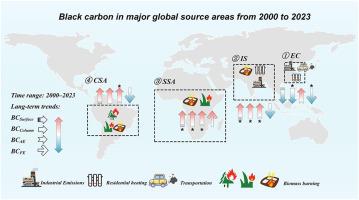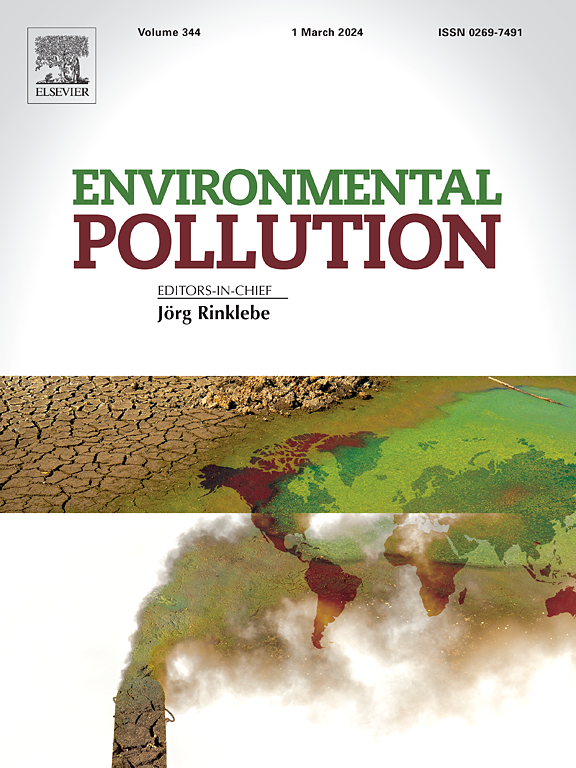Black carbon in major global source areas from 2000 to 2023: Spatiotemporal variation, vertical distribution, and extreme case analysis
IF 7.6
2区 环境科学与生态学
Q1 ENVIRONMENTAL SCIENCES
引用次数: 0
Abstract
Black carbon (BC) emissions in regions such as Eastern China (EC), the Indian Subcontinent (IS), Sub-Saharan Africa (SSA), and Central South America (CSA) notably affect global air quality, climate change, and human health, owing to intensive anthropogenic activities and biomass burning. Using modern-era retrospective analysis for research and applications, version 2 reanalysis data and emission inventories, we quantified the long-term spatiotemporal variations and vertical distributions of atmospheric BC and anthropogenic emissions across various sectors (2000–2023). In addition, we explored the formation mechanisms of extreme cases in representative cities (such as Beijing, Delhi, Luanda, and Sucre). The results indicated consistent annual trends in BC surface mass concentrations and column mass densities. In the EC and IS, BC primarily originated from anthropogenic emissions, whereas in the SSA and CSA, biomass combustion predominated. Notable regional differences in anthropogenic BC emissions were observed, with all sectors in SSA exhibiting a markedly increasing trend. Seasonal patterns of BC were influenced by local meteorological conditions, emissions from anthropogenic sources, and biomass burning. In EC and IS, BC concentrations declined rapidly with decreasing air pressure, whereas in SSA and CSA, the decline was slower in the lower atmosphere, with a rapid decrease at an altitude of approximately 700 hPa. High-concentration BC events in the representative cities are linked to interactions between local emissions, adverse meteorological conditions, and atmospheric circulation. Our study quantified the long-term BC characteristics in major global source regions from multiple perspectives, providing valuable scientific insights for both regional and global atmospheric environmental research and management.

求助全文
约1分钟内获得全文
求助全文
来源期刊

Environmental Pollution
环境科学-环境科学
CiteScore
16.00
自引率
6.70%
发文量
2082
审稿时长
2.9 months
期刊介绍:
Environmental Pollution is an international peer-reviewed journal that publishes high-quality research papers and review articles covering all aspects of environmental pollution and its impacts on ecosystems and human health.
Subject areas include, but are not limited to:
• Sources and occurrences of pollutants that are clearly defined and measured in environmental compartments, food and food-related items, and human bodies;
• Interlinks between contaminant exposure and biological, ecological, and human health effects, including those of climate change;
• Contaminants of emerging concerns (including but not limited to antibiotic resistant microorganisms or genes, microplastics/nanoplastics, electronic wastes, light, and noise) and/or their biological, ecological, or human health effects;
• Laboratory and field studies on the remediation/mitigation of environmental pollution via new techniques and with clear links to biological, ecological, or human health effects;
• Modeling of pollution processes, patterns, or trends that is of clear environmental and/or human health interest;
• New techniques that measure and examine environmental occurrences, transport, behavior, and effects of pollutants within the environment or the laboratory, provided that they can be clearly used to address problems within regional or global environmental compartments.
 求助内容:
求助内容: 应助结果提醒方式:
应助结果提醒方式:


